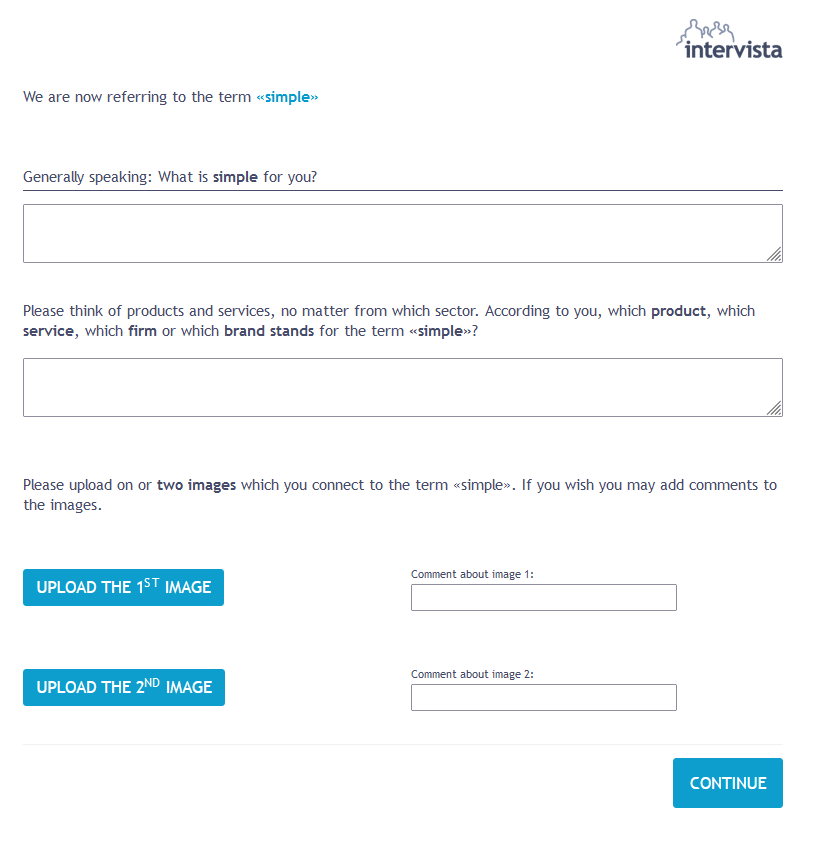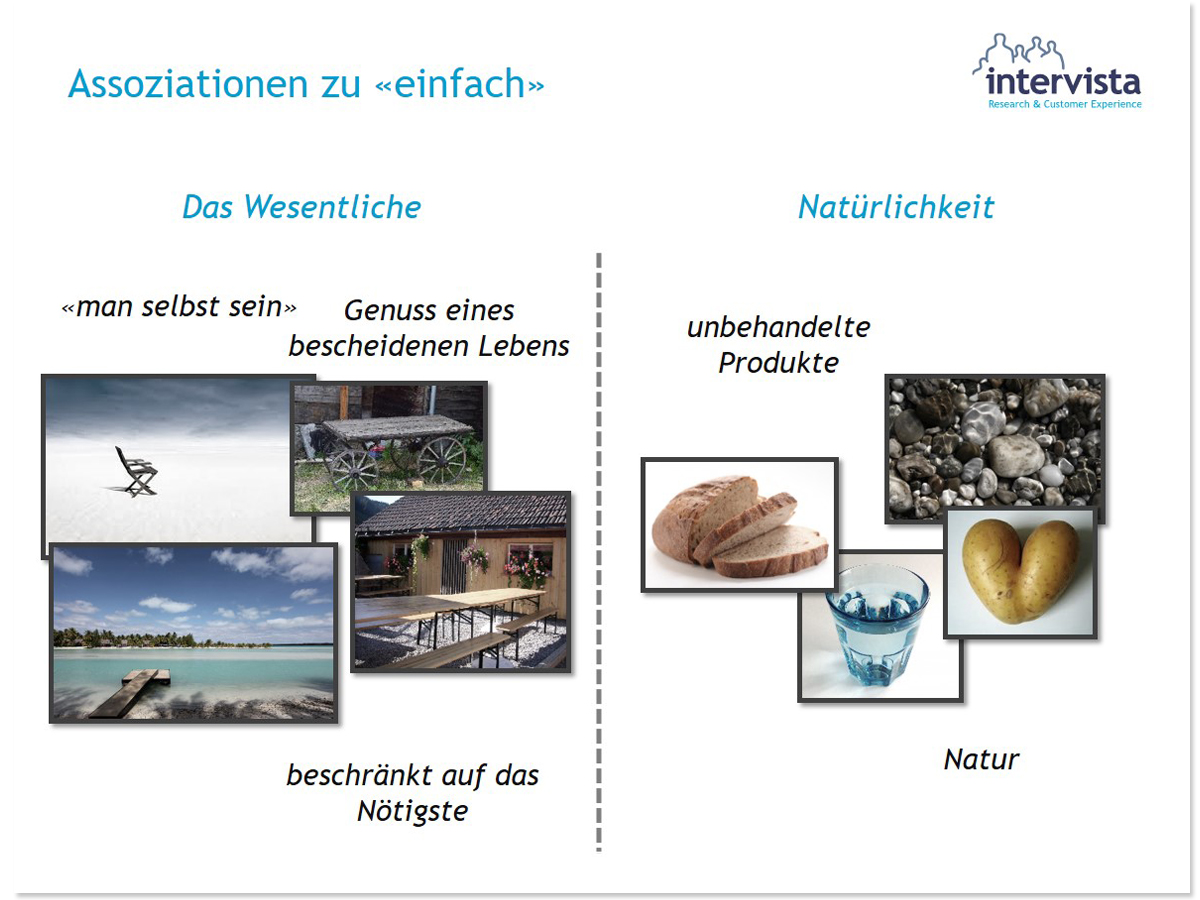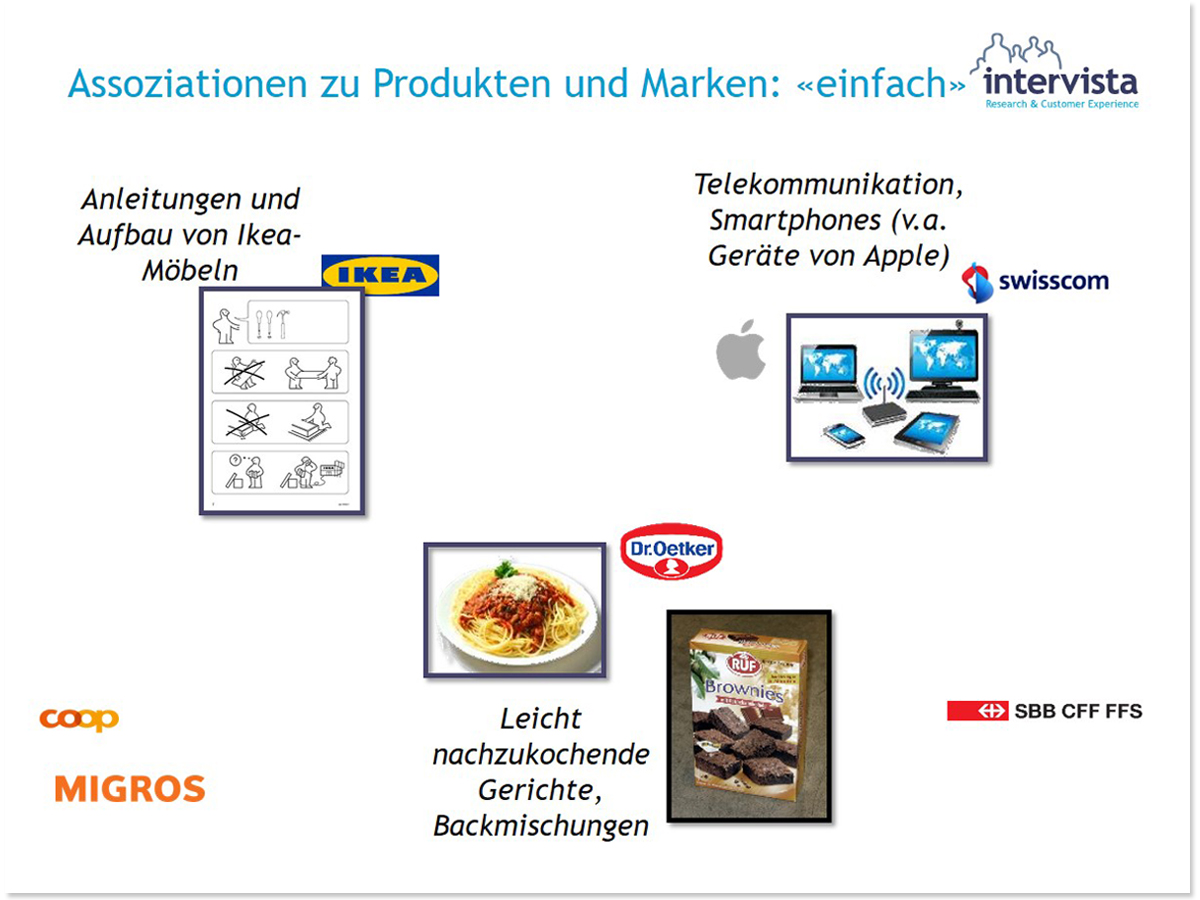For some time now, a correct and important trend among many large companies has been to take customer orientation seriously and not only to live it internally, but also to transport it externally in communication. An essential element here is the corporate design of the company – this should embody the brand values and make it clear to its customers: «We are here for you, you are important to us".
intervista was recently commissioned by a large Swiss company to conduct a study to test whether the newly developed brand values «simple", «competent» and «reliable» fit the new campaign that was being developed. So much for a classic quantitative study.
Now, however, the question arose: How can more insights be drawn from this study? The comparison between different campaign designs and their «fit» with the brand values is valuable, but it does not help to look into the minds of the respondents and get an idea of what exactly customers understand by the terms and what they associate with them. This knowledge helps enormously in designing the campaign and its imagery in such a way that the brand values are conveyed from the customer’s perspective.
We had the idea not to conduct a classic qualitative face-to-face study, but to work with an online co-creation approach. This saves time and money, both of which are usually not available in abundance. For the same budget, many more people can participate in the study online.
 Deutsch
Deutsch
 English
English
 Français
Français





